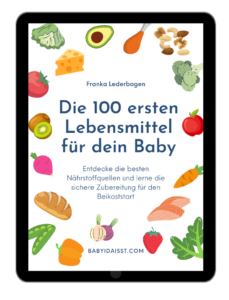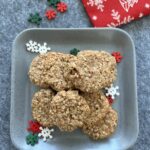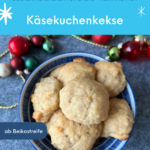Hi, I’m Franka, mother of two wonderful babygirls, nutritionist, specialist for baby-friendly introduction to solids and baby-led weaning.
December is one of my favorite times of the year. I love the cozy atmosphere with decorated windows and Christmas lighting. A walk through a fragrant Christmas market with its unique holiday treats add to the joy.
Since the birth of my children, the Christmas season has changed. I hope my girls will enjoy this time as much as I do. But, as much of that enjoyment comes from the warm drinks and Christmas pastries, they probably aren’t suitable for babies due to their high sugar content.

My eldest daughter didn’t eat any processed sugar until she was 18 months old. (For me, that was a long time, considering how often relatives tried to offer her sweets in-between at that age!). This strategy also worked for al-most as long with my youngest.
My eldest daughter is a December baby. So, by her first Christmas, she was almost 12 months old and already a proficient eater. Exactly the age at which babies often want to eat what mom eats. I, of course, wanted to share my Christmas treats with her and thought: How can I offer her Christmas cook-ies without processed sugar? This question gave me the idea of turning clas-sic recipes into sugar-free versions and testing new recipes without sugar. That’s how this book was born.
Let’s be realistic: It is only possible to avoid processed sugar to a certain ex-tent. In my opinion, you don’t have to avoid it 100%. Consuming it to a lesser degree already makes a difference and this can be controlled particularly well with sugar-free alternatives.
Get your free sample!

I’ve brought you my favorite classic recipes for sugar-free baking in this book, all of which use natural sweeteners. Babies can eat the treats them-selves or with assistance. They are ideal for the winter months but are also great for snacking throughout the year.
From the moment the little ones show signs to be ready for solids, you can use many of the recipes, for others, baby may need more practice. The recipes also include tips for you. In addition, you will learn when you should start with the introduction of complementary feeding (solids), the signals that in-dicate they are ready, and which foods are not allowed.








